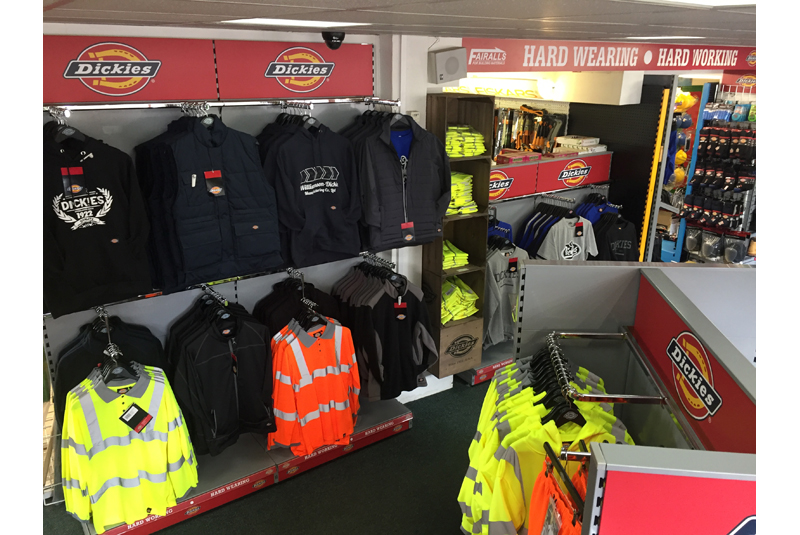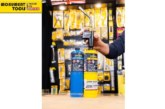
Dickies Workwear has come a long way from its roots in the small town of Bryan, Texas where it launched in 1922. PBM takes a closer look at the global name which has helped drive the evolution of modern workwear.
Since Dickies was first established nearly 100 years ago, the influence of factors such as technological advancement and ever-tightening health and safety regulations have had a great impact on workwear designs. However, the company has found the single biggest influence on the market has been the shifting demands of the tradesmen who rely on its clothing and footwear.
Dickies’ own market research has shown an increased demand for workwear that’s smart and fashionable. Clothing that provides the functionality and durability needed to support tradesmen in their jobs, but which also helps them cultivate a professional image.
James Whitaker, the firm’s Marketing Director, believes this presents a big opportunity for merchants. He comments: “Given the personal nature of the decision making process when buying workwear, tradesmen are likely to invest more time — and money — when choosing what to wear than they would on building materials, for example. As such, clothing and footwear products are often a good chance to increase profit margins if merchants get it right, which means offering a selection that includes smart, fashion-led options.”
The company’s latest innovation in this area includes the recently launched Pro range, which is billed as offering tradesmen “a fresh new alternative to traditional workwear”. James explained: “Essentially, the Pro range gives tradesmen outfit options that can see them from the job, to meeting a potential client, to the pub — something that simply doesn’t look out of place when walking down the high street.”
With this focus in mind, Dickies advises merchants to manage their workwear section almost as a separate store within their stores. Essentially, displays should look no different to what customers would expect when visiting a typical clothing shop, so racks should be easy to browse and everything presented in an eye-catching manner.
James’s advice is to work with manufacturers who provide a high level of on-site support, including regular visits to advise on how workwear is displayed, as well as the comprehensive POS material you would expect from any supplier.
A close eye on safety
The health and safety regulations that govern many trades have naturally filtered through to workwear. For instance, PPE must provide adequate protection against any associated risk for which it is intended to protect. What this means is that workwear manufacturers must review essential health and safety requirements that have been laid down by the EU Parliament. UK and EU politics aside, these requirements outline, among others, design principles and ergonomic stipulations.
As an example, the requirements for hi-visibility clothing detailed in the standard EN ISO 20471 dictate a number of factors that must be taken into account when designing workwear — such as ensuring the wearer is visible from any angle.
James states: “We work closely with merchants to ensure they’re able to help customers with their PPE requirements, which will naturally depend on the conditions they’re likely to be working in and at what time of year. Look for workwear manufacturers who provide information that’s detailed, but easy to understand at a glance, to help you find the right solution for your customers.”
Sustainable material sourcing
As with all industries, workwear production has come under increased regulation from environmental laws in recent decades and companies are increasingly aware that both retailers and end users prefer to buy products that are produced sustainably.
With an Environmental Policy and Management System firmly in place, Dickies’ own efforts to work sustainably include a commitment to continuously look for ways of reducing process steps and energy consumption. James urged: “Ask workwear suppliers about their environmental credentials, especially as purchasing decisions are increasingly likely to be driven by these factors.”
Looking to the future
With ranges such as Dickies Pro proving successful for many of the merchants the company works with, there’s clearly a big appetite for workwear that combines both fashion and functionality — presenting a big opportunity for stockists.
James concluded: “At Dickies Workwear, we’re focused on using the best of both modern and traditional construction techniques — marrying innovation, comfort and protection, without losing sight of the practical priorities that tradesmen demand first and foremost. Our consistent emphasis on quality is echoed in everything we do, from our product designs to who we choose to work with, and it’s something we believe will stand us in good stead as the workwear market continues to evolve in years to come.”
Fact File
Company Address: Second Avenue, Westfield Trading Estate, Midsomer Norton, Radstock, BA3 4BH
Website: www.dickiesworkwear.com.
Product range: Dickies Workwear offers an extensive range of clothing and footwear including coveralls, trousers, shirts, jackets, fleeces and bodywarmers. Plus a wide selection of high performance products, including foul weather protection, high visibility garments and flame retardant items.
Group structure / subsidiary companies: Dickies Workwear is owned by VF Corporation, a global leader in clothing and footwear.
Accreditations: Investors in People, ISO
Trade Associations: BMF and NMBS Associate/Supplier
Company comment: “A combination of quality and product innovation — with a constant eye on the ever-evolving demands of your customers — makes Dickies an ideal brand to work with. By choosing to work with a globally recognised name, you stand to reap the rewards in profit and customer loyalty. Plus, the level of support available means you are free to focus on all other aspects of running your business.”









